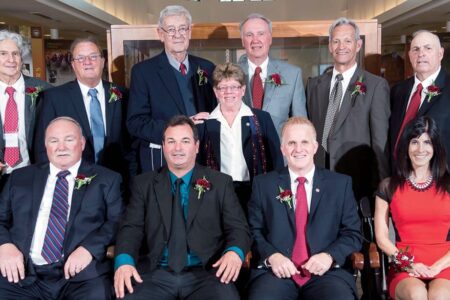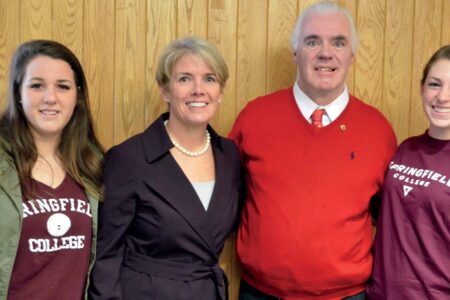Digital Arts Students Provide Community Service
Ruth West showcases the nonprofit website her students redesigned.
Ruth West showcases the nonprofit website her students redesigned.
While perusing an online fundraising website that benefits local nonprofits, Ruth West, associate professor of computer graphics, spied an organization’s website she thought could use a tune up.
It’s been West’s mission for the past 15 years to identify local agencies that could benefit from the talents of her students in the Arts 190: Community Service Experience class to either create a new website or redesign an existing one—free of charge. The Valley Gives (Western Mass.) philanthropy website provided a good selection of potential candidates for the most recent class of students in the spring of 2015.
In this case, Kane’s Krusade, an organization based in Springfield that works to prevent homelessness for dogs, was one of five lucky recipients to benefit from the services of West’s students. West reached out to Kim George, owner and founder of Kane’s Krusade, to get a feel for her interest in the project. George was more than happy to let the students redesign her organization’s website.
“I am very much about community interaction. I thought it was a great project. It was worth my time, and I have very little free time,” George says. “The students learned a lot and we received a nice website so it worked out for everybody. Since we didn’t spend money on a redesign we were able to buy more dog food and bring dogs to the vet.”
One of the goals of the Arts 190 class is for students to learn how to work with a client, especially under the challenges of collaborating with an often-busy nonprofit.
“Every nonprofit has one person wearing 17 hats. They have no time and no energy. They want the website but don’t have any time to deal with it,” West says. “Students have to learn to make something work in someone else’s timeline.”
Anthony Barbuti ’16, a computer graphics major, served as the Web manager on the Kane’s project and worked with teammates Alyssa Lindsey ’16, a computer graphics and digital arts major, and Katharine Bedrossian ’15, who earned a psychology degree. The three were in charge of making sure the content was up and running and that the design reflected the client’s needs.
“It is an amazing class. From a student’s perspective, it helps with my resume. It also teaches us how to work on a team and with a client,” says Barbuti, who felt the website turned out visually appealing and more functional than the original design.
The Arts 190 class began focusing on nonprofits in 2000 as the Web became more integrated into the computer graphics and digital arts program. Given the class’s long history of following the mission of the College, it made sense to add a nonprofit component, West says.
“I said ‘what can we do that’s a win-win where students learn something and the community benefits,’” West says.
Initial clients included local YMCAs. Students’ responsibilities started with designing a basic website from scratch, and training the Ys staff on Dreamweaver, a development tool for creating websites.
In 2014, West updated the curriculum to reflect the fact that clients needed redesigned websites rather than brand new ones, and the program switched from Dreamweaver to WordPress, a website content management system. As part of the class, students were responsible for teaching the client how to use WordPress.
“We’ve gone from ‘Hi, we’re the YMCA and this is where we’re located’ to ‘Hi, here are all our programs, listings, online registrations, and videos,” West says.
“What can we do that’s a win-win where students learn something and the community benefits?”
Ruth West
The class is offered each spring to sophomores, juniors, and seniors. At the beginning of each semester, leaders of organizations who agree to participate would come to the class and educate students on the goals and mission of the agency. They would also fill out a questionnaire to give students guidance on their desires and needs for the website—everything from defining the purpose of the site to color palette to what kind of photos to include.
West divides students into teams of two to three to work on each client’s website. During the first three weeks of the 15-week class, each team comes up with design concepts, which are reviewed by the client. Once a design is approved, each student is assigned a particular role or roles, such as producer, webmaster, social media director, text and image editor, and mobile webmaster. Collectively, they help create 10-30 Web pages for each redesign.
It’s West’s policy that all of her students receive a grade of F at midterm because the project is not yet complete.
“They all know the F is coming. In the real world that is how it would be if a project didn’t get done,” West says. “Students get judged at the end and the site has to be up and running for them to pass.”
Besides Kane’s Krusade, class members from spring 2015 semester also redesigned websites for other local nonprofits, including one that offers advice to mothers with newborns, a foundation in memory of a teen who passed away from a heart attack, one that provides recreation programs for people with disabilities, and a site for an art school.
Barbuti’s Art 190 classmate, Ryan Bibisi ’15, worked on a team to redesign the website for All Out Adventures, an organization for people with disabilities. His role included coming up with a new layout, page redesigns, photo galleries, a contact form, and a page for staff biographies. Bibisi and his teammates had the challenge of starting with an existing site on which pages didn’t function properly and were not redirecting users to the Home page.
“I enjoyed the fact that the client had given me creative freedom with my only restrictions being that I needed to stick to a certain color scheme,” he says. “I like the idea of putting my sense of design and style on a client’s work.”
Bibisi, who earned a degree in computer graphics and digital arts, sees many benefits to the experience he gained from the project, including understanding the “finer aspects of Web design.”
“It definitely prepared me for the real world because I took the same skills I used in that class and applied them to an actual Web design client. I needed to redesign a website from the ground up,” he says.
Clients also benefit from the students’ work, including receiving a website that is completely different from their previous version, and one with a more modern feel with easy accessibility, Bibisi says.
“I’d say the benefits that the client reaped would be a quality product from a group of people who believed in the cause they were supporting,” he says.
Next up for Arts 190 students in the spring of 2016 class is to rebuild a website to make it mobile-friendly for the YMCA of Greenfield, Mass., which was one of the program’s first clients in the early 2000s.




